The usually blue-flowered Agapanthus brightens South African gardens, and many gardens around the world, during the summer. It is an easy-going plant that I pretty much take for granted, so I was surprised to find that its classification has been a complex issue for botanists.
Commonly, it is referred to as a lily, and it was first classed, botanically speaking, as a lily. That was back in the 1700s when Parisian botanist L’Héritier established the genus in 1788 (in the year prior to the commencement of the French Revolution I was interested to note!). The samples taken to Europe were collected in South Africa – all wild Agapanthus species are native to southern Africa.
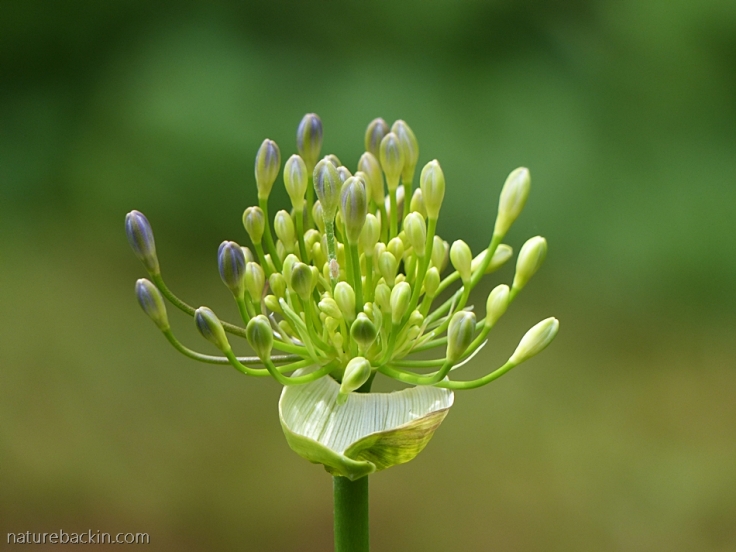
An Agapanthus flower head erupting after the calyx has split and peeled back to reveal the buds emerging from within
The taxonomically vagrant Agapanthus moved from the lily family to the amaryllis family to the onion family and back to the amaryllis family, and now it resides as the only genus in its own family: Agapanthaceae. Even the number of species, all endemic to South Africa as mentioned, has been subject to debate and change, but after revised analysis that included DNA testing, the number of species has been reduced from ten to six species: two evergreen and four deciduous.
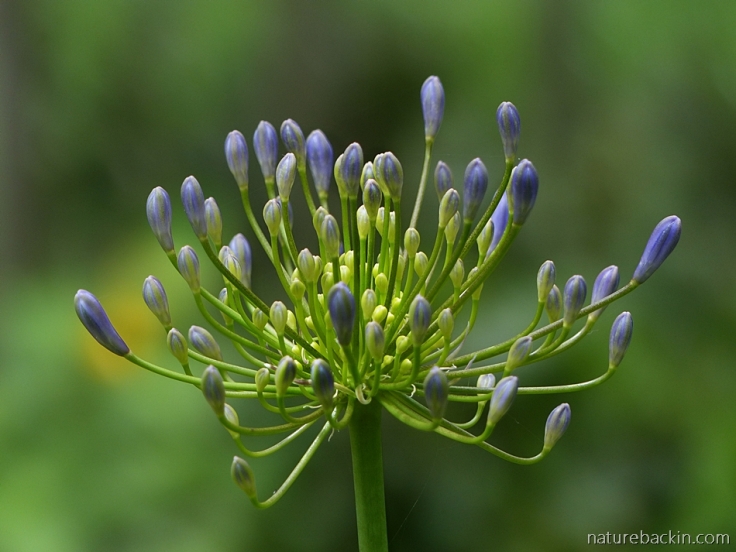
As the flower head extends and the buds swell the blue coloration becomes more apparent
In South Africa the plant is commonly referred to as, well, the agapanthus, but elsewhere, in English at least, it has been or is known as the African hayacinth, the African lily and even the Lily of the Nile, although it occured naturally nowhere near the Nile. The agapanthus hybridises easily, even in the wild, and these days there are about 600 hybrids and cultivars available across the world. In some countries, such as in Australia, it has naturalised and has become something of a pest displacing native plants in some regions.

An agapanthus in flower in a patch of sunshine near a birdbath in our garden, showing off its long strap-like leaves
Given that the agapanthus has achieved such worldwide popularity and is so widely loved, it turns out to be well named; the name is derived from the Greek agapé meaning love, and anthos meaning flower.

An agapanthus in full bloom in our garden
The commonest agapanthus plants grown in gardens in South Africa and around the world are hybrids and cultivars of the evergreen species Agapanthus praecox.
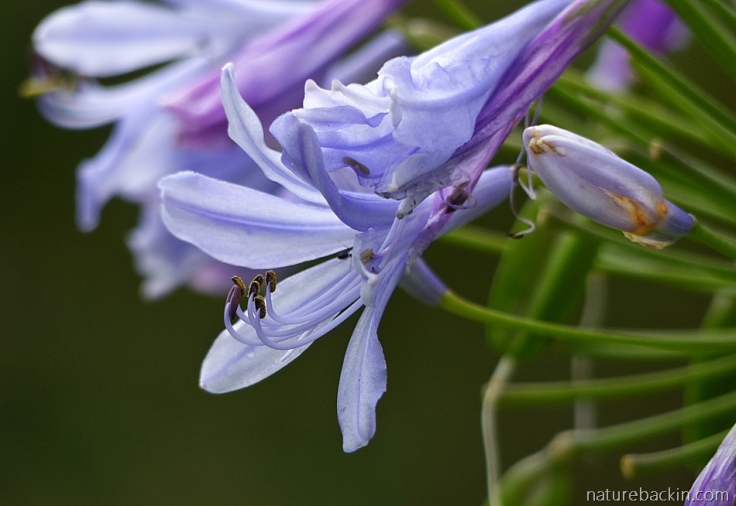
The flowers on one flower head, bud, open or wither at slightly different times, prolonging the flowering time
Agapanthus plant species are used in traditional medicine in South Africa. Preparations from the roots are used as an ante-natal medicine and to induce labour and to assist contractions in difficult births. Other medicinal uses include treating cradle-cap and as a tonic for babies, treating chest and heart conditions, and as an aphrodisiac. Protective charms for health and good luck are also prepared from the plant.
Although parts of the plants contain substances that are toxic to humans, some of the phytochemicals in agapanthus species that have been identified may have anti-inflammatory and imuno-regulatory properties and may assist in treating coughs, fluid retention and uterine health.
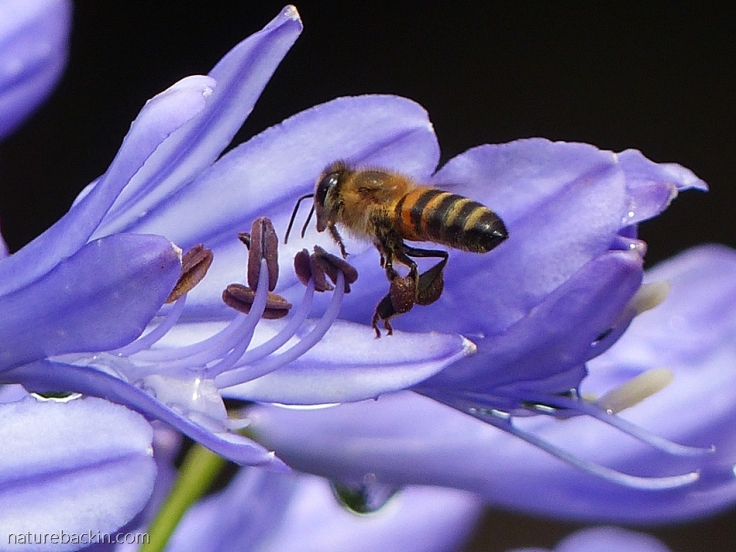
Honeybees and other pollinators are attracted to agapanthus flowers. This hovering honeybee’s wings are fluttering so fast they are not visible to the camera. However, the purple of the pollen in the legs sacs is clear to see
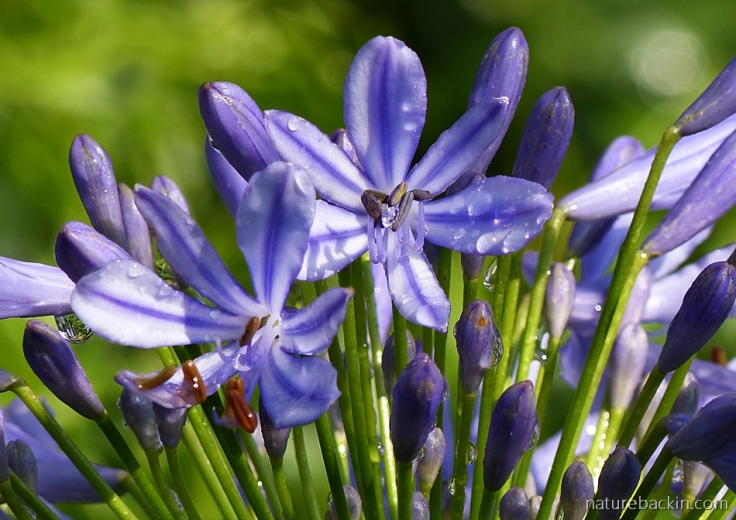
Raindrops still cling to the flowers in the early morning sun
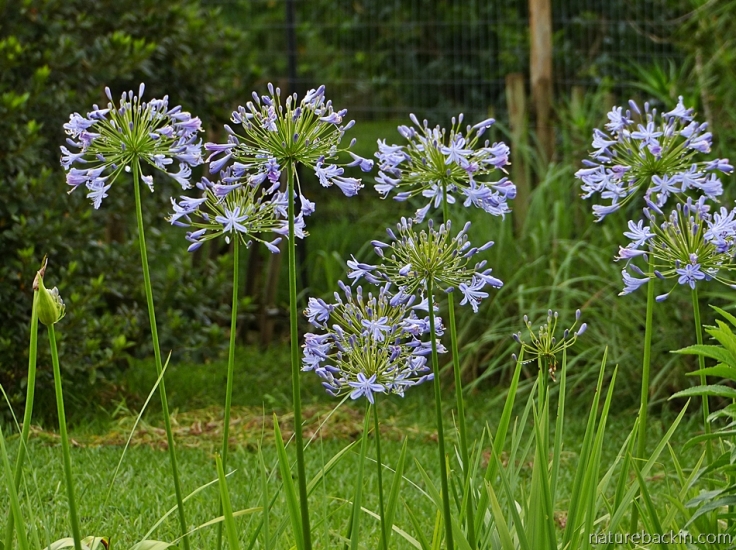
A small stand of tall agapanthus flowers in our garden
Agapanthus plants can form dense colonies, which can be lifted and split every few years. Often they are used for mass plantings, but I prefer to mix agapanthus plants in more diverse plantings that are more interesting to the eye, more natural and sustain a greater variety of life. Some of the dwarf varieties of agapanthus are successfully grown as pot plants.
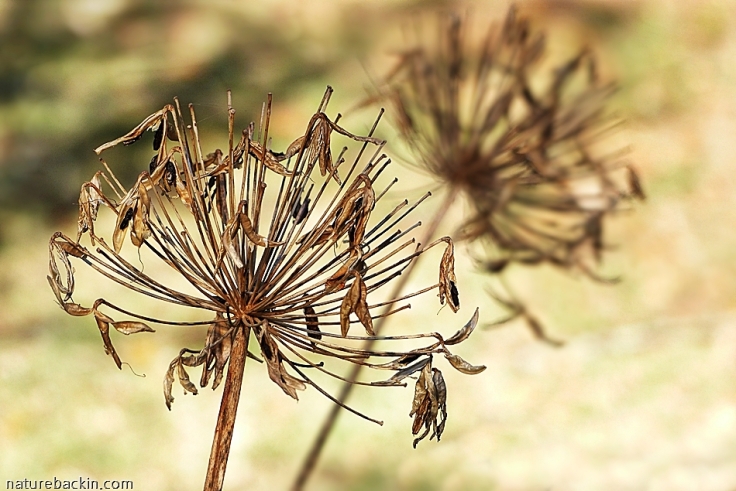
Decorating our garden in early winter are the interesting seed heads of the agapanthus plants
Although it is conventional to cut off the heads of agapanthus flowers once they have finished flowering, I like to leave them to go to seed. They are most decorative and once they are thoroughly dry they make helpful fire lighters!
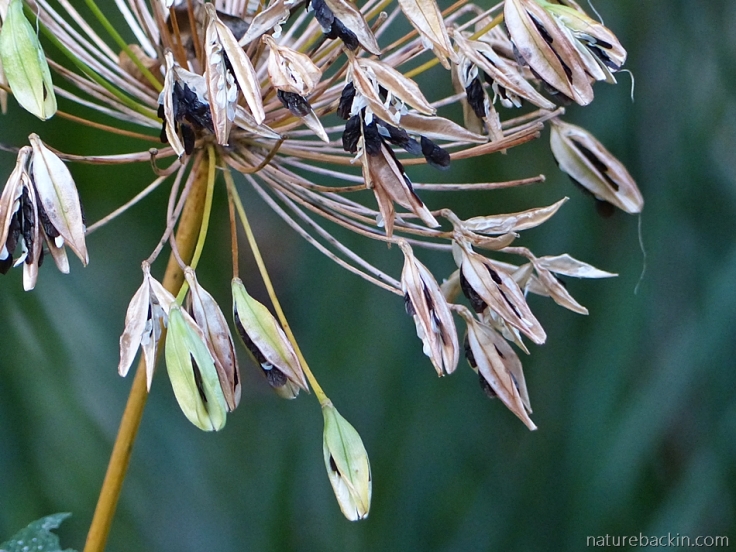
The seeds of the agapanthus are dispersed by the wind
In our garden I have not seen any seedlings taking root, nor have I noticed anything eating the seeds, so perhaps the role the seed heads play in our garden is largely decorative – to my eyes at least.
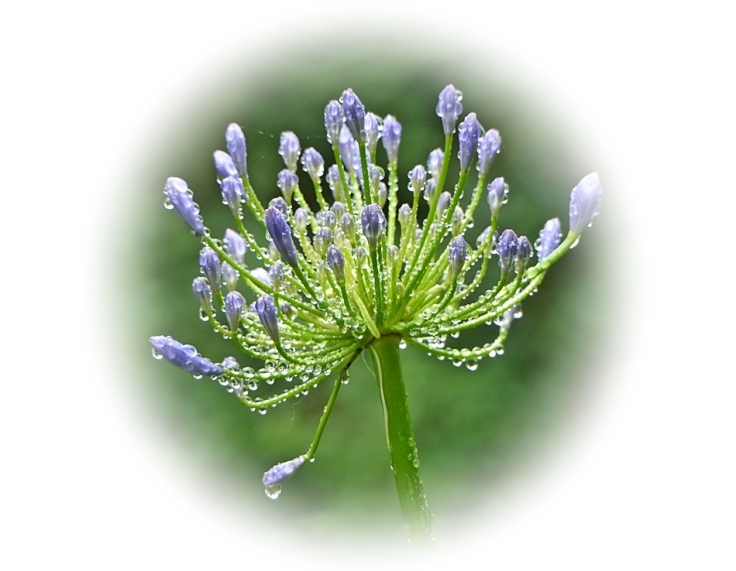
Sources:
Notten, A. 2004. Agapanthus praecox. SANBI. http://pza.sanbi.org/agapanthus-praecox; Pooley, E. 1998. A Field Guide to Wild Flowers of KwaZulu-Natal and the Eastern Region. Durban: Natal Flora Publications Trust; Van Wyk, B. & Gericke, N. 2007. People’s Plants: A Guide to Useful Plants of Southern Africa. Pretoria: Briza.
Posted by Carol

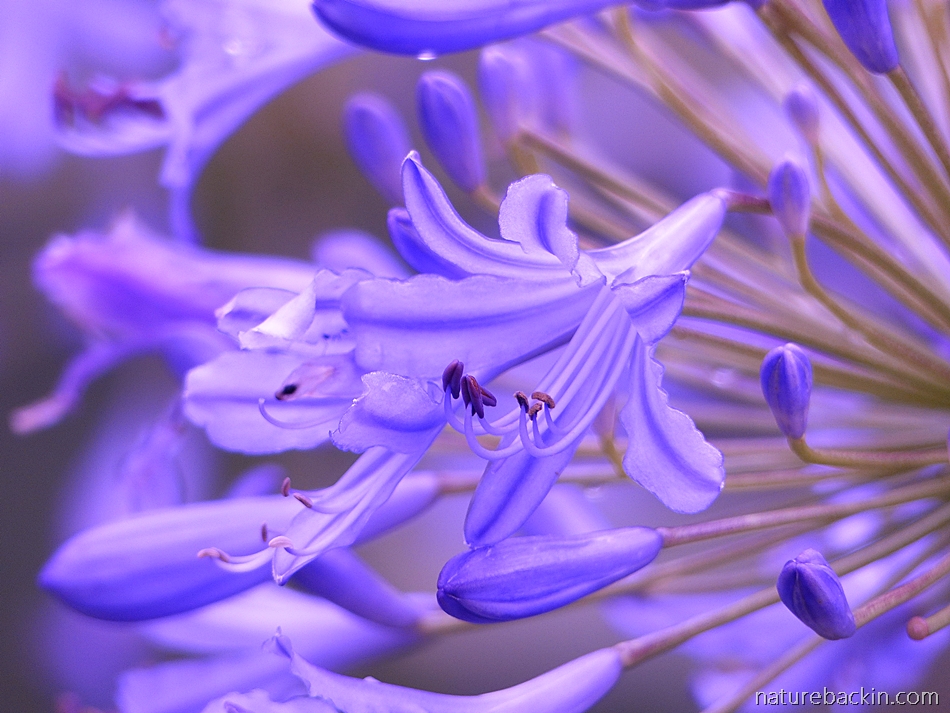







March 4, 2019 at 10:40 am
Dear Carol, beautiful photos, wonderful botanic and other information! I had to spilt up a dense patch that I grow near the house, last winter, gave many bulbs away and the replanted bulbs are doing well despite a dry start to summer. xxx
LikeLiked by 1 person
March 4, 2019 at 8:05 pm
Thanks Christeen. We also dug up and split up a dense patch last year and gave away many bulbs. The plants we kept and transplanted here have settled into their new spaces and they are also doing really well. They are such cheerfully hardy plants.
LikeLike
March 4, 2019 at 6:50 am
Lovely photos and great infomation as always. I used to grow agapanthus flowers in my ‘tropical’ garden in Washington State.
LikeLiked by 1 person
March 5, 2019 at 5:59 pm
Thank you Graham. The agapanthus seems to be grown just about everywhere!
LikeLiked by 1 person
March 4, 2019 at 6:47 am
Agapanthus seedheads as firelighters… One-upmanship at its finest 😉 As ever, it’s so interesting to see what your garden offers compared with ones here: and a botany lesson too!
LikeLiked by 1 person
March 4, 2019 at 7:49 pm
🙂
LikeLike
March 1, 2019 at 5:21 am
This flower is very popular here on the south Oregon coast. I planted one at the previous house and it eventually started putting up new stems in the cracks in the cement walkway. I dug up one of the smaller additions and planted it here at the new location where it seems to be quite happy. My partner has a hard time remembering Agapanthus. He generally refers to it as the Angry Panther. 😀
LikeLiked by 1 person
March 2, 2019 at 7:26 pm
I am always surprised that so many South African plants do so well around the world. I rather like the name Angry Panther 🙂
LikeLiked by 1 person
March 1, 2019 at 2:38 am
Reading how South Africa’s indigenous plants are taking the gardening world by storm always make me so proud. I just wish more South Africans would garden “indigenously” – imagine whole suburbs turning into wildlife havens!
LikeLiked by 1 person
March 2, 2019 at 7:24 pm
It is odd how people tend to value the exotic. I so agree that the suburbs have the potential to be havens and corridors for so many forms of wildlife. If every suburban garden had more mixed plantings including indigenous plants, and even a “wild” corner, what a difference that could make.
LikeLiked by 1 person
March 1, 2019 at 1:59 am
Such a pretty flower – your photos are beautiful, Carol. Agapanthus are quite commonly used in municipal plantings here in the frost-free areas of the US. In season, it is a sought-after florist offering.
LikeLiked by 1 person
March 2, 2019 at 6:52 pm
Thanks Eliza. It is interesting to know that they are planted so extensively so far afield.
LikeLike
February 28, 2019 at 8:43 pm
Lovely and very informative as always!
LikeLiked by 1 person
February 28, 2019 at 8:56 pm
Thank you Sandy.
LikeLiked by 1 person
February 28, 2019 at 9:02 pm
You are welcome.
LikeLiked by 1 person
February 28, 2019 at 7:30 pm
Beautiful flowers. Thanks to the prolonged drought though, mine have not flowered for two years!
LikeLiked by 1 person
February 28, 2019 at 7:54 pm
Hopefully they will manage to survive in the longer term and live to flower again one day. I do feel for you in this unnerving drought, and I keep hoping for rain in your region.
LikeLike
February 28, 2019 at 6:26 pm
Fascinating! I love these plants. I’m currently working out the planting for a new border. Perhaps I should include one or two…
LikeLiked by 1 person
February 28, 2019 at 7:43 pm
What fun to be planning and planting a new border. I am surprised how many South African plants do so well in colder climates.
LikeLiked by 1 person
February 28, 2019 at 6:06 pm
On the island Madeira there are a lot of Agapanthus along the “Levadas “, the water canals. I like the plants very much despite they are invasive and sometimes a pest.
LikeLiked by 1 person
February 28, 2019 at 7:34 pm
I did pick up in my reading that they occur in Madeira. A shame that they can be a problem there.
LikeLiked by 1 person
February 28, 2019 at 4:31 pm
A wonderful series of the whole cycle of Agapanthus – glorious shots.
LikeLiked by 1 person
February 28, 2019 at 7:32 pm
Thanks very much 🙂
LikeLike